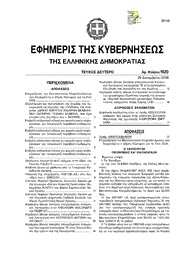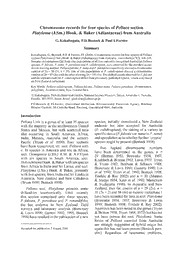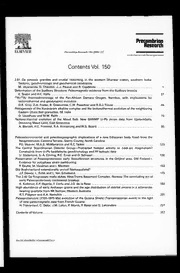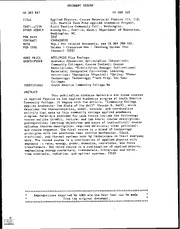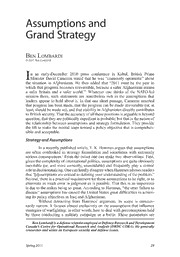
DTIC ADA548906: Assumptions and Grand Strategy PDF
Preview DTIC ADA548906: Assumptions and Grand Strategy
Assumptions and Grand Strategy B L en omBardi © 2011 Ben Lombardi I n an early-December 2010 press conference in Kabul, British Prime Minister David Cameron stated that he was “cautiously optimistic” about the situation in Afghanistan. He then added that “2011 must be the year in which that progress becomes irreversible, because a safer Afghanistan means a safer Britain and a safer world.”1 Whatever one thinks of the NATO-led mission there, such statements are nonetheless rich in the assumptions that leaders appear to hold about it. In that one short passage, Cameron asserted that progress has been made, that the progress can be made irreversible (or, at least, should be made so), and that stability in Afghanistan directly contributes to British security. That the accuracy of all these positions is arguable is beyond question; that they are politically expedient is probable; but that is the nature of the relationship between assumptions and strategy formulation. They provide the lift to make the mental leaps toward a policy objective that is comprehen- sible and acceptable. Strategy and Assumptions In a recently published article, T. X. Hammes argues that assumptions are often overlooked in strategy formulation and sometimes with extremely serious consequences.2 From the outset one can make two observations. First, given the complexity of international politics, assumptions are quite obviously inevitable (or, and more correctly, unavoidable) and frequently play a central role in decisionmaking. One can hardly disagree when Hammes advises readers that “[a]ssumptions are critical to defining your understanding of the problem.” Second, there is a practical requirement for those assumptions to be right, or to eliminate as much error in judgment as is possible. That this is an imperative is due to the stakes being so great. According to Hammes, “the utter failure to discuss” assumptions has caused the United States great difficulties in achiev- ing its policy objectives in Iraq and Afghanistan. Without detracting from Hammes’ argument, its scope is unneces- sarily narrow. It focuses almost exclusively on the assumptions that influence strategies of warfighting; in other words, how to deal with preconceptions held by those conducting a military campaign or a battle. These parameters are Ben Lombardi is a defense scientist employed at Defence Research and Development Canada’s Centre for Operational Research and Analysis (DRDC CORA). He generally researches and writes on European security and defense issues. Spring 2011 29 Report Documentation Page Form Approved OMB No. 0704-0188 Public reporting burden for the collection of information is estimated to average 1 hour per response, including the time for reviewing instructions, searching existing data sources, gathering and maintaining the data needed, and completing and reviewing the collection of information. Send comments regarding this burden estimate or any other aspect of this collection of information, including suggestions for reducing this burden, to Washington Headquarters Services, Directorate for Information Operations and Reports, 1215 Jefferson Davis Highway, Suite 1204, Arlington VA 22202-4302. Respondents should be aware that notwithstanding any other provision of law, no person shall be subject to a penalty for failing to comply with a collection of information if it does not display a currently valid OMB control number. 1. REPORT DATE 3. DATES COVERED 2011 2. REPORT TYPE 00-00-2011 to 00-00-2011 4. TITLE AND SUBTITLE 5a. CONTRACT NUMBER Assumptions and Grand Strategy 5b. GRANT NUMBER 5c. PROGRAM ELEMENT NUMBER 6. AUTHOR(S) 5d. PROJECT NUMBER 5e. TASK NUMBER 5f. WORK UNIT NUMBER 7. PERFORMING ORGANIZATION NAME(S) AND ADDRESS(ES) 8. PERFORMING ORGANIZATION U.S. Army War College,Parameters,122 Forbes REPORT NUMBER Avenue,Carlisle,PA,17013 9. SPONSORING/MONITORING AGENCY NAME(S) AND ADDRESS(ES) 10. SPONSOR/MONITOR’S ACRONYM(S) 11. SPONSOR/MONITOR’S REPORT NUMBER(S) 12. DISTRIBUTION/AVAILABILITY STATEMENT Approved for public release; distribution unlimited 13. SUPPLEMENTARY NOTES 14. ABSTRACT 15. SUBJECT TERMS 16. SECURITY CLASSIFICATION OF: 17. LIMITATION OF 18. NUMBER 19a. NAME OF ABSTRACT OF PAGES RESPONSIBLE PERSON a. REPORT b. ABSTRACT c. THIS PAGE Same as 12 unclassified unclassified unclassified Report (SAR) Standard Form 298 (Rev. 8-98) Prescribed by ANSI Std Z39-18 Ben Lombardi not accidental. Where and when presuppositions have failed in their military application is clearly Hammes’ principal concern, and his call for a critical reexamination of assumptions is linked to a desire to improve the efficacy of the US armed forces. Yet, upon reflection, it is clear that assumptions affect all levels of strategy formulation, from grand strategy to tactical levels of combat. More to the point, if the basic assumptions underlying grand strategy are incor- rect or otherwise poorly understood, even superior military performance might not preserve, protect, or advance national interests. It might, therefore, be argued that there is a greater demand for deci- sionmakers to be aware of assumptions at the level of grand strategy. Why is this so? It is at that level of strategy formulation that decisions are made to use armed force and how doing so relates to the much larger landscape defined by national interests and objectives. In his study of late-16th century Spain, Geoffrey Parker distilled a definition that is applicable today, noting that grand strategy: Encompasses the decisions of a given state about its overall secu- rity—the threat it perceives, the ways it confronts them and the steps it takes to match ends and means—and each involves the integration of the state’s overall political, economic, and military aims, both in peace and war, to preserve longterm interests, including the manage- ment of ends and means, diplomacy and national morale and political culture in both the military and civilian spheres.3 In other words, it is not just about defeating an adversary on the battlefield, but rather about how any military problem advances core national aims. Assumptions at the level of grand strategy necessarily embrace such issues as national roles, likely challengers, as well as the most effective means of advanc- ing national objectives. With this broad understanding in mind, the discussion that follows argues that we need to recognise that there are different types of assumptions—imposed, government process, and strategic culture—affecting strategy formulation. Acknowledging that the mitigation of error is also an essential component of any attempt at strategy, a second objective is to intro- duce the idea of the efficacy of assumptions. Three Types of Assumption Members of planning staffs will likely be familiar with imposed assumptions. This exposure comes when officials are told about a govern- ment’s policy constraints. Assumptions frequently define the approach that officials are required to take in approaching questions of strategy formula- tion. An imposed assumption can assume a variety of forms: certain topics are designated as off-limits for analysis; specific countries are to be assessed in a particular manner; the positive impact of a particular policy to the national interest is to be accepted at face value. In military circles, the effect of an imposed assumption is often referred to as “situating the appreciation” and therein is the controversial aspect of its application. Such restrictions are, by their nature, intensely political, appear to undercut a logical review process, 30 Parameters Assumptions and Grand Strategy and often seem arbitrary. An imposed assumption is not always logical, even if it answers a near-term political requirement. An imposed assumption can also short-circuit the process of strategy formulation. In some cases, it can take the form of dogma that, while once founded on a rational assessment, is preserved by government for reasons that are often far removed from those that gave it birth. The assumption might even be able to resist challenges posed by new developments that would suggest it be revisited. The difficulties—political and even psychological—attached to critically examining and discarding the assumption undermine the arguments for doing so. A good example of this is the 10-Year Rule that influenced British strategic planning during a portion of the Inter-War Era, and was based on the assumption that the country would not face a major conflict for ten years. A paper prepared in 1932 for the Committee of Imperial Defence (CID), described how the 10-Year Rule had acquired a progressively larger hold on the country’s strategic planning: The most important matter to which we invite the attention of the Committee of Imperial Defence is the basis of the Estimates of the Defence Services, namely, “that it should be assumed, for the purpose of framing the Estimates of the Fighting Services, that at any given date there will be no major war for ten years.” This assumption was adopted in July 1928 . . . . Before that time there had been a series of somewhat similar assumptions (e.g., in August 1919, applying only to the estimates of that year, when demobilization was still in progress; in 1925, applying to Japan and to the Air Force scheme of expansion for Home Defence; and in 1927, applying to a European war). But apart from 1919, it was not until 1928 that the principle became of world-wide application and that the date advanced from day to day. 4 The assumption underlying the 10-Year Rule was strongly endorsed by both those who advocated disarmament for ideological reasons, as well as those who sought to contain government spending. Among the latter was Winston Churchill, who, as Chancellor of the Exchequer (1924-1929), urged that the Rule be made a guiding principle in perpetuity.5 If the Rule was not a 10-year promise of peace, it nonetheless framed strategic planning as larger defense budgets were regarded as politically unten- able. The Rule’s influence meant that, especially after 1925, rolling appreciations of British military strength were firmly subordinated to a quest to reduce risks to the country’s financial stability. Indeed, as historian John Ferris points out, the government used the Rule as a means of exerting firm control over what it deemed unrealistic budget submissions by the armed forces.6 Acquisition of new capabilities was made dependent on immediate needs, a qualification that was frequently very difficult for the Chiefs of Staff to make. When review- ing imperial defenses in the Far East, where Japanese actions suggested that the Rule was no longer valid, the Chiefs of Staff Sub-Committee noted that “[t]he above events prompt inquiry as to our own readiness to face sudden aggression by Japan. The position is about as bad as it could be.” Although an assessment of the British strategic position was made known to the govern- ment “every year since 1919,” the Rule was not abandoned until 1932. And, Spring 2011 31 Ben Lombardi even then, the government chose to exclude planning for war with France, the United States and Italy.7 Interestingly, within four years, the Fascist regime in Rome had aligned itself with Nazi Germany rendering that newer assumption equally invalid. Even if it did not prevent substantial investment in Britain’s defenses, the assumption that a major war was at least a decade away encour- aged officials to view the deteriorating international situation with less concern than they might otherwise have done. While historians have made the case that it was a reasonable policy given the circumstances, the 10-Year Rule was widely perceived by contemporaries as an imposed assumption that rational- ized economies at the expense of Britain’s security. It is important to acknowledge that not all such constraints are wrong. Sometimes, they can reflect very good strategic sense and make the highly complex demands imposed by strategy-making and strategy-evaluation far more manageable. An example of this is the exclusion of the United States as a possible adversary from British planning before both world wars. A paper prepared in 1928 for the CID stated that “[t]he improbability of war with America has been a factor in the policy of this country for a consider- able number of years.”8 It further acknowledged that the consequences of a conflict with the United States would be disastrous to British interests. Foreign Secretary Sir Austen Chamberlain observed that such a conflict was beyond reasonable expectations: It would not even be necessary for the United States to take any warlike action against us in protest. They could close markets and financial sources of vital importance to us. Such a situation [was] the only one from which a war with America might arise, but he could not imagine that any British Government would be mad enough to create such a position.9 Asserting that war with America was implausible played far more than just a passive role (i.e., excluding conflict with the US from military scenarios) in British planning. When the consolidation of the Royal Navy followed the introduction of reforms in the early years of the 20th century, there was only limited concern expressed about the reduction of naval assets in North American waters. Whitehall was also guided in framing its relations with other countries by that outlook. The Anglo-Japanese Arbitration Treaty (1911) included a clause that released Britain from its alliance obligations should Japan find itself in a conflict with the United States. The imposition on strategic planning of this assumption was probably influenced by a variety of nonrational considerations, such as the wrongness of a conflict between the two principal Anglo-Saxon powers. It was, after all, a leading British politician, Joseph Chamberlain, who in 1896 referred to an Anglo-American war as an “absurdity as well as a crime” and opined that the two countries would one day work together to fashion a new world order “sanctioned by humanity and justice.”10 Just as significant, however, this pre- supposition was also firmly grounded in a rational appreciation of Britain’s vulnerabilities and its strategic interests. As that assessment demanded that conflict with Washington be avoided, there was no purpose served in planning 32 Parameters Assumptions and Grand Strategy military contingencies against the United States. The CID, and presumably lower-level defense planning staffs, were instructed to assume that no such conflict would occur. The second type of presupposition can be termed the government process assumption. In his article, Hammes writes that “a critical element of any discussion of strategy is to derive assumptions and then propose them. This ensures everyone in the discussion is trying to solve the same problem.” This seems an obvious requirement for strategy formulation, but it is difficult when dealing with national security issues, especially when a policy is the product of an increasingly complicated system of governance that involves a large number of personalities and agencies. Impacting strategy formulation, this type of assumption is generated through bargaining, persuasion, and exchanges of opinions among officials, sometimes representing a variety of different govern- ment departments, and often within a largely hierarchical setting.11 Obviously, the outcome of such a process is far less predetermined than an imposed assumption. Even if participants from one agency are instructed on what positions to advocate, those from another might not feel so constrained. Equally probable, they will come with alternate, perhaps conflicting, but often entirely justifiable, directives or viewpoints. “When officials come together to take some action,” Graham Allison and Philip Zelikow observe in the classic study Essence of Decision, “the result will most often be different from what any of them intended before they began interacting as a group.”12 Indeed, it is the very unpredictability of this approach that most probably accords legiti- macy to the assumptions it generates. No one individual or agency can easily claim ownership of the conclusions reached and, implicitly, all are assumed to have made a contribution. And, perhaps just as important, blame for erroneous judgments is dispersed. These assumptions tend to be willingly accepted, even if the people employing them were not directly involved in the process itself. The development of the US doctrine of containment in the early Cold War era is an example of government process assumptions impacting strategy formulation. Originally formulated by George Kennan, the idea of containment went in a direction that he did not support. His opposition, however, had little impact. NSC-68 (1950), the document that captured the official approach to containing the Soviet Union, was drafted by a committee composed of State Department and Defense officials headed by Paul Nitze. In it, strategic planners made a number of crucial assumptions: that the crisis in US-Soviet relations could only be overcome by domestic transformation of the USSR; that the United States was able to accelerate changes already underway in the Soviet Union; and that the United States had a direct national interest in opposing Soviet expansion in all countries. Kennan did not share all of these assumptions and was not involved in the drafting of the document. Many of his ideas had been transformed by the process of drafting NSC-68 and, while the policy of containment endured for many years after, he cannot be regarded as its sole author or even its most important contributor.13 Without judging the quality of the assumptions informing NSC-68, one can still acknowledge that the Spring 2011 33 Ben Lombardi interdepartmental process successfully generated a set of planning assump- tions that guided US grand strategy during much of the Cold War. Interestingly, the effort to generate a consensus (i.e., a commonly accepted assumption) can often reveal the variety of more parochial views of participating agencies. Such was the case when heated discussions occurred among British officials in late 1943 and 1944 as the postwar world was being considered. The core of one such debate concerned competing assessments about the future of Anglo-Soviet relations. Defence Ministry planners tended to focus on the postwar balance of power and, confronted with the enormous mili- tary resources at Stalin’s command, viewed the USSR as a likely threat (indeed, the only likely threat) to British strategic interests. Given that assumption, the Foreign Office’s confidence in the utility of the new world organization, the United Nations, to help secure British interests seemed downright dangerous. Emboldened by such stark conclusions, the Chiefs of Staff categorically rejected the Foreign Office’s position that any assessment of the postwar environment had to stay within the lane dictated by current policy: The examination of an unpleasant situation which may perhaps arise is in no way incompatible with the pursuit of a policy designed to prevent that situation arising. Yet the Foreign Office seems to recoil from the precaution of considering how to insure against the failure of our policy. They seem in effect to presume that the policy we intend to pursue is bound to be successful provided no thought is taken to meet the possibility of failure.14 That argument generated considerable hostility at the Foreign Office, and highlighted both professional rivalries and differing bureaucratic cultures. In dismissing the military planners’ views, one senior official condescendingly attributed their assertiveness to “not having sufficient time to give proper con- sideration to post-war problems.”15 But, by far, the major aspect of the dispute concerned the understanding of the task itself. The Foreign Office, tending to fall back upon already established policy directives, refused to accept the position of the Chiefs of Staff that they were required to “examine all serious eventualities.” Far from assuming the USSR as an adversary after Germany’s defeat, the Foreign Office instead viewed the maintenance of the Anglo-Soviet alliance as a core objective. There was considerable fear that the contingency planning that British military commanders were advocating would yield exactly that outcome: heightened Soviet anxieties and, most probably, a downward spiral of mutual suspicions. “The Chiefs of Staff are not only crossing their bridge before they come to it,” a senior official wrote, “but even construct- ing their bridge in order to cross it.”16 The Foreign Office obviously assumed that skillful diplomacy would be able to overcome the tensions created by the postwar balance of power that so worried the military chiefs. In this case, overcoming the differences became a bridge too far. Building a consensus based on the opposed points of view, each generated by a government agency with its own defined set of assumptions and responsibili- ties, was not possible. The task of drafting a single paper that established a set of assumptions upon which future policy could be grounded became hostage 34 Parameters Assumptions and Grand Strategy to the interdepartmental process. The Foreign Office sought to overcome resis- tance by referring the dispute to the British cabinet, where Foreign Secretary Anthony Eden ultimately overrode his own officials’ concerns and agreed that “contingency planning for a war with Russia should continue but should be confined to a very small circle.”17 In the end, a paper was prepared that met with Foreign Office approval by downplaying the Soviet threat while, at the same time, defense planners worked (if more stealthily) on that very problem. The last type of assumption to be reviewed is more difficult to docu- ment factually, but is often revealed by explaining different national responses to international developments. It captures the implicit understandings “that express and shape coactive intent and actions” of any country’s statesmen and policy-planners.18 For clarification, it can be termed strategic culture. According to Colin Gray, strategic culture and national style: Have very deep roots within a particular stream of historical experi- ence—as locally interpreted. While it is not assumed that culture and style are immutable—that would be absurd—it is assumed that national patterns of thought and action, the preferred way of coping with prob- lems and opportunities, are likely to alter only gradually . . . .19 While it cannot ever be considered the prime determinant of any decision or action, strategic culture nonetheless provides a framework in which approaches to questions of war and peace are considered. National attitudes toward inter- state relations obviously affect the conduct of foreign policy, and “when great powers are involved, the degree of consensus versus conflict in world poli- tics.”20 Strategic culture defines the milieu within which a country’s strategy formulation process occurs and decisions are taken regarding diplomacy and armed force.21 One sees the influence of strategic culture in the use of military power in modern US foreign policy, where advanced technology is emphasized and minimizing casualties is an operational limitation. At the same time, it also constrains the types of military operations that are undertaken or contem- plated. Robert Kennedy famously advised his brother that he could not launch a surprise attack on Cuba during the 1962 missile crisis because it was not compatible with American values. More broadly, strategic culture also informs Washington’s international policies. The Kosovo campaign (1999) and the war with Iraq were partly driven by the deeply held belief that US values are uni- versal. However much one would like to see US global leadership as being comparable to that of the Roman Empire twenty centuries ago or any other Great Power since, America’s strategic perspective is far less pragmatic than most and is often more affected by normative considerations. Taking strategic culture into account highlights the reality that national assumptions about global affairs or the use of military power are not universal. The fact that pre-1914 Germany was a highly militarized society contributed to the grand strategy that Berlin pursued. It encouraged German leaders to view war as an attractive (given prevalent Social Darwinian ideas) and useful (given their recent history) option. Strategic culture can also change, catastrophic Spring 2011 35 Ben Lombardi defeat in war being one such catalyst. Today, German identity is rooted in assumptions that fundamentally de-legitimise much of the national history prior to 1945. Often referred to as a “civilian power,” the Federal Republic is described as having a “security culture of reticence.” With a preference for multilateralism, the German public is famously ambivalent about deploying the Bundeswehr abroad.22 Recent out-of-country missions (e.g., Afghanistan), suggesting a new robustness in the country’s foreign policy, have instead been conceived by German leaders as an international duty, rather than the pursuit of purely national interests. An understanding of strategic culture greatly enhances predictions of a country’s reaction to external happenings. The Efficacy of Assumptions What is the purpose of telling decisionmakers that there are assump- tions that influence grand strategy? Hammes’ article, with its call for a greater degree of critical awareness of assumptions in order to improve the chances of military success, seems far more apposite to countries engaged in war. But, is it not possible that because we see assumptions as so commonplace that we make no real effort to analyze either their content or their effectiveness? If the imposed assumption that not planning for war with the United States ultimately made good sense in early-20th century British strategic planning, was the con- trary assumption that there were fundamental and irreconcilable differences with Germany equally valid? Answering that question with a negative compels a writer to run the gauntlet of history because Britain did wage war twice against Germany. Still, there were Whitehall officials at the time who worried that the negative impression created by Britain’s own actions and sprawling empire had been ignored.23 What do we mean when we talk about the efficacy of an assumption? In daily life, assumptions help people make sense of the world and those beliefs are not always dependent upon another for validation. But there is an ines- capable bilateral element involved in grand strategy, for the overall goal is to control, coerce, or influence other political actors in order to advance national objectives. However, the environment within which those objectives are being sought is also occupied by active interlocutors. Perhaps even more interesting, they are doing exactly the same thing—applying assumptions to control ele- ments of the world they inhabit. This idea of taking account of, and adapting strategy in light of, the activities of others is captured in the most recent British national security strategy’s call for “creative insight into how best to achieve our own objectives and prevent adversaries from achieving theirs.”24 Efficacy is, therefore, a measure of insight—to what degree does an assumption describe the strategic context and capture the intentions of the political actors that it is describing? It recalls what Clausewitz, called “a sen- sitive and discriminating judgment,” and “a skilled intelligence to scent out the truth.”25 Focusing on this aspect of assumptions is, therefore, not only to emphasise understanding but also to express a need to control as much as pos- sible a highly dynamic environment. In this context, we must always bear in 36 Parameters Assumptions and Grand Strategy mind that uncertainty is the handmaiden of efficacy. We can never know for certain if our assumptions are insightful until they are tested against the reality they purport to understand. Many assumptions that assume strategic impor- tance will therefore remain essentially contestable: are all failed and failing states really a threat?; will globalization lead to greater international interde- pendence and decrease the likelihood of interstate conflict?; is systemic war a remote possibility? Today, these questions are often converted into declarations describing modern international security affairs, but we need to keep in mind that they may not be so. Perhaps one of the most widespread beliefs that affects strategic think- ing in the Western world today is that “no country wants war,” alongside such corollaries as “armed conflict is irrational” and that “war never solves anything.” In The Twenty Years’ Crisis, 1919-1939, E. H. Carr discussed at length the impact similar thinking had on the hearts and minds of those in the Western democracies engaged in formulating and managing international policy. Borrowing from 19th century Anglo-American liberal philosophy, pro- ponents of such beliefs drew upon what Carr termed the myth of the harmony of interests. It generated “an assumption that every nation has an identical inter- est in peace, and that any nation which desires to disturb the peace is therefore irrational and immoral.”26 International conflict is conceived as illusory for a common interest unites all disputants, and to avoid it one need only unearth that essential harmony. In observing the influence of such thinking in our own time, Adda Bozeman has warned of a failure to account for the “plurality of frames of reference” that characterise international politics. 27 “Resolute levelling,” she asserted, has “led gradually to the widespread conviction that there really are no ‘others’ and that enmity, hostility and misunderstandings are passing phe- nomena, always amenable to conciliation or some sort of settlement.”28 A grand strategy that assumes that no one wants war, and that everyone is either satisfied with the status quo or can be made so by diplomatic means (e.g., concessions, negotiations, or referrals to international law), leaves that country vulnerable to any government that disagrees. The pursuit of efficacy demands that deep-rooted presuppositions, such as those identified by Carr and Bozeman, be acknowledged and critically reviewed. Doing so will be increasingly important as the global order (defined by underlying values, political concepts, and international institutions) that is largely founded upon Western ideals comes under a growing challenge from the non-Western world. In this regard, philosopher Charles Taylor has written: The great challenge of the coming century, both for politics and for social science, is that of understanding the other. The days are long gone when Europeans and other “Westerners” could consider their experience and culture as the norm toward which the whole of humanity was headed, so that the other could be understood as an earlier stage on the same road we had trodden. “Now we sense,” he cautions, “the full presumption involved in the idea that we already possess the key to understanding other cultures and norms.”29 As traditional cultures are being vigorously reasserted throughout the world, the Spring 2011 37
The list of books you might like

What Happened to You?

The Mountain Is You

The 5 Second Rule: Transform your Life, Work, and Confidence with Everyday Courage

The Spanish Love Deception
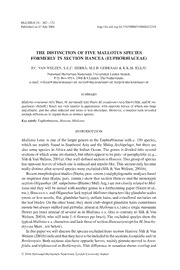
The distinction of five Mallotus species formerly in section Hancea (Euphorbiaceae)
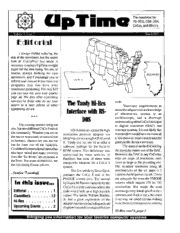
Up Time Newsletter Volume 01 Number 07
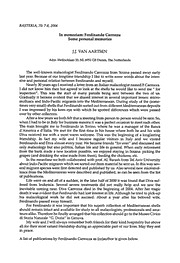
In memoriam: Ferdinando Carrozza. Some personal memories
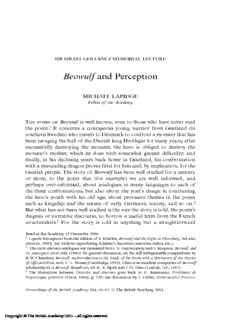
by Michael Lapidge

Capitalizing on Content: A Compelling ROI for Change - AIIM
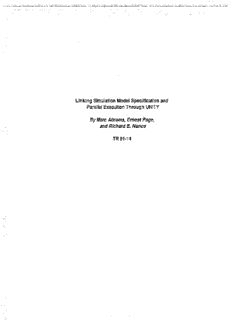
By Marc Abrams, Ema-st Page
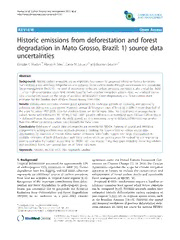
NASA Technical Reports Server (NTRS) 20110015537: Historic Emissions from Deforestation and Forest Degradation in Mato Grosso, Brazil: 1. Source Data Uncertainties

The Bright Book of Life

Poetry and Painting in Song China: The Subtle Art of Dissent
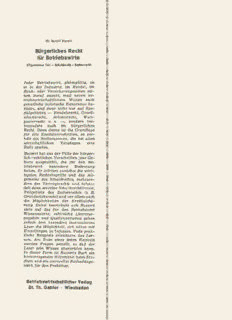
Bürgerliches Recht für Betriebswirte: Allgemeiner Teil — Schuldrecht — Sachenrecht

Plant Science 1993: Vol 93 Table of Contents
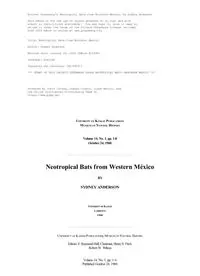
Neotropical Bats from Western Mexico by Sydney Anderson

Greek Government Gazette: Part 2, 2006 no. 1742

Fm6-50 (1)
